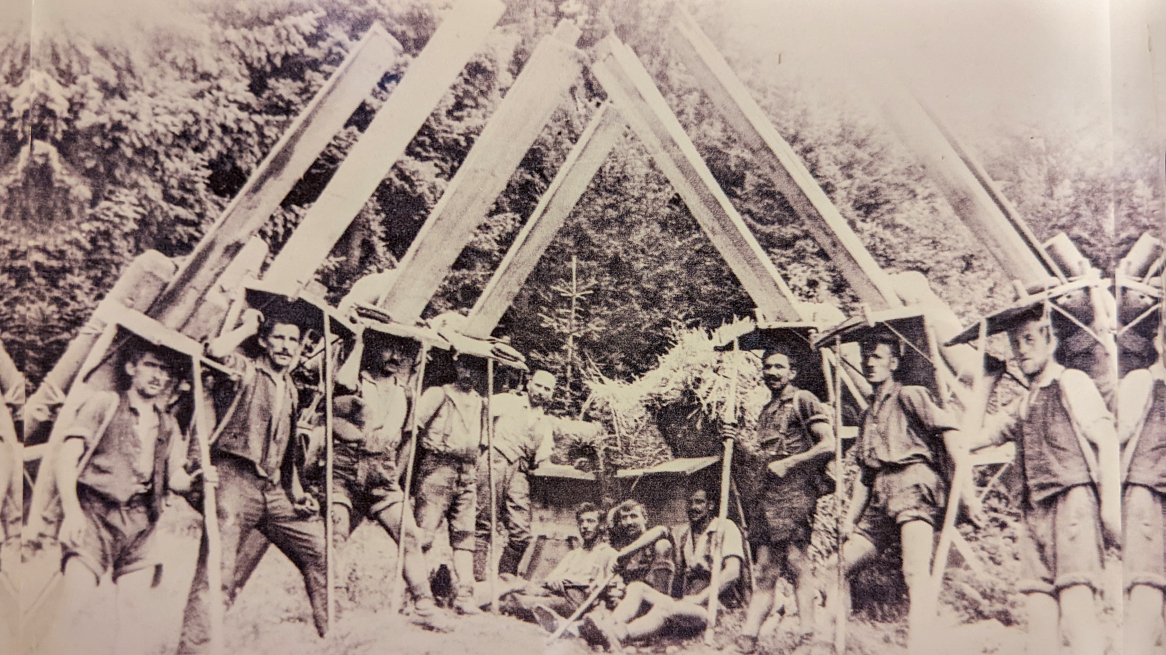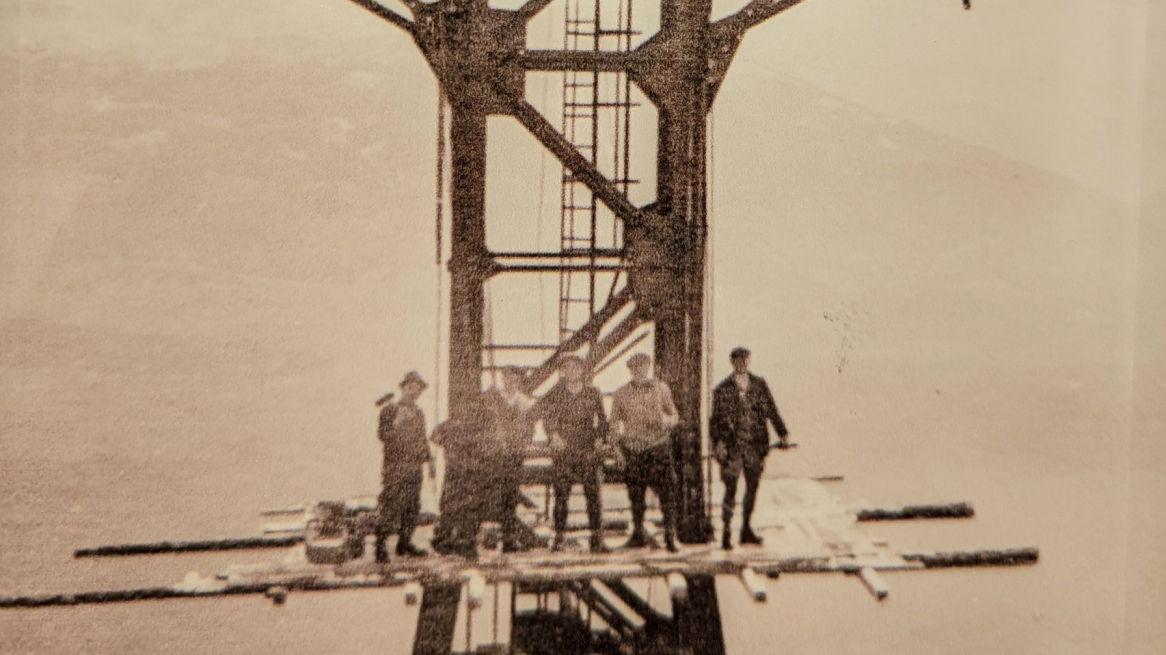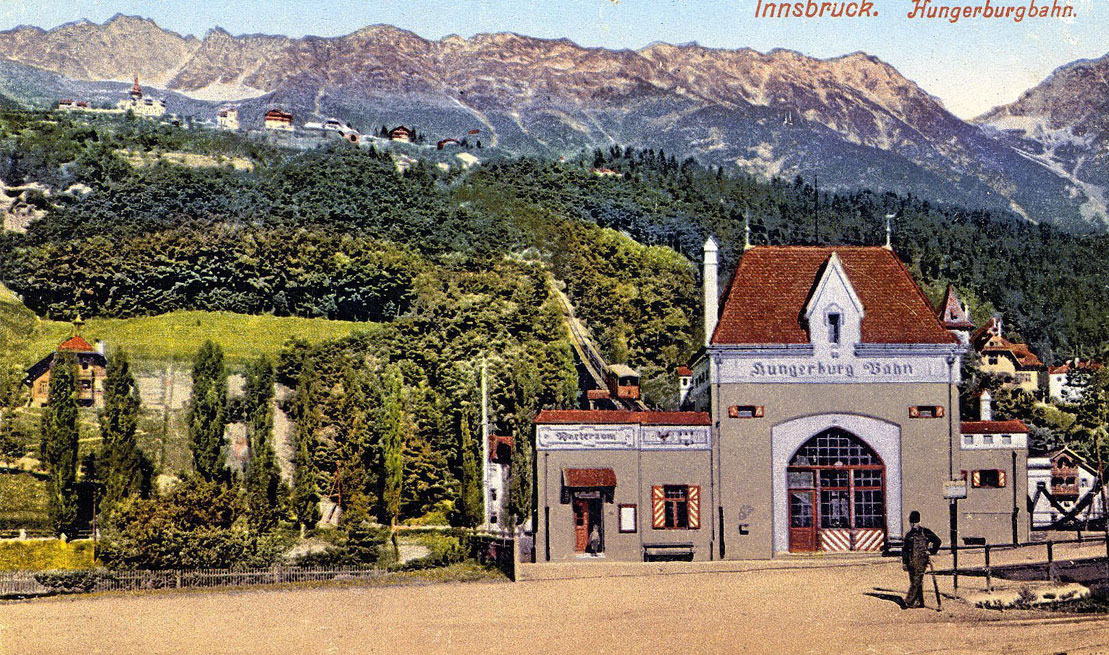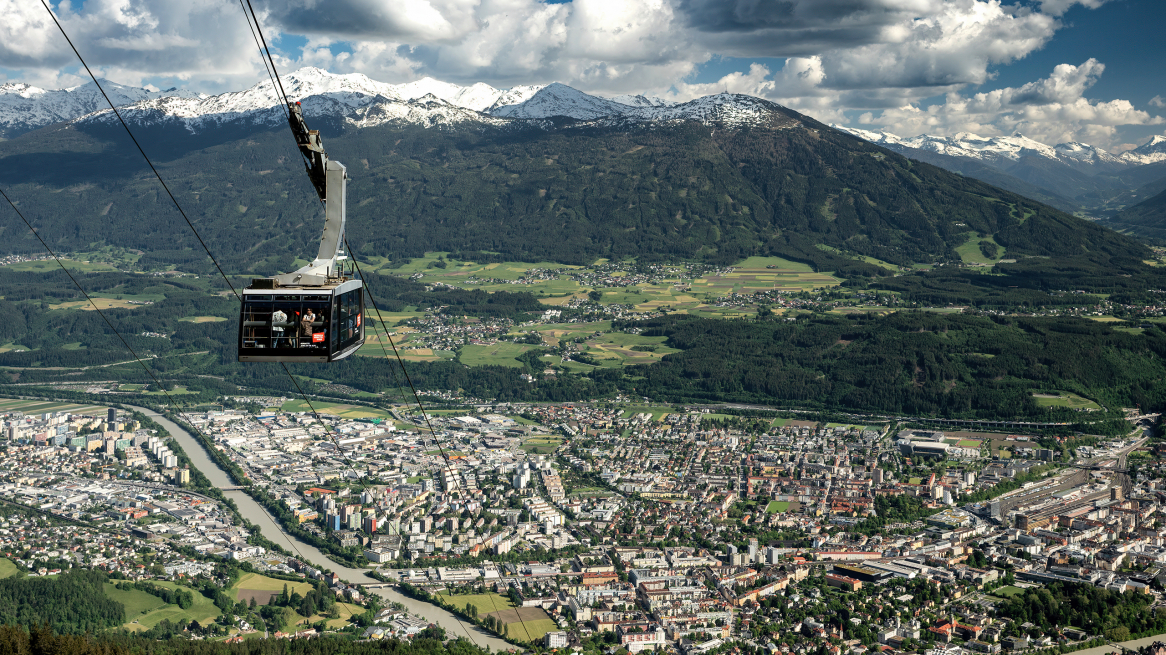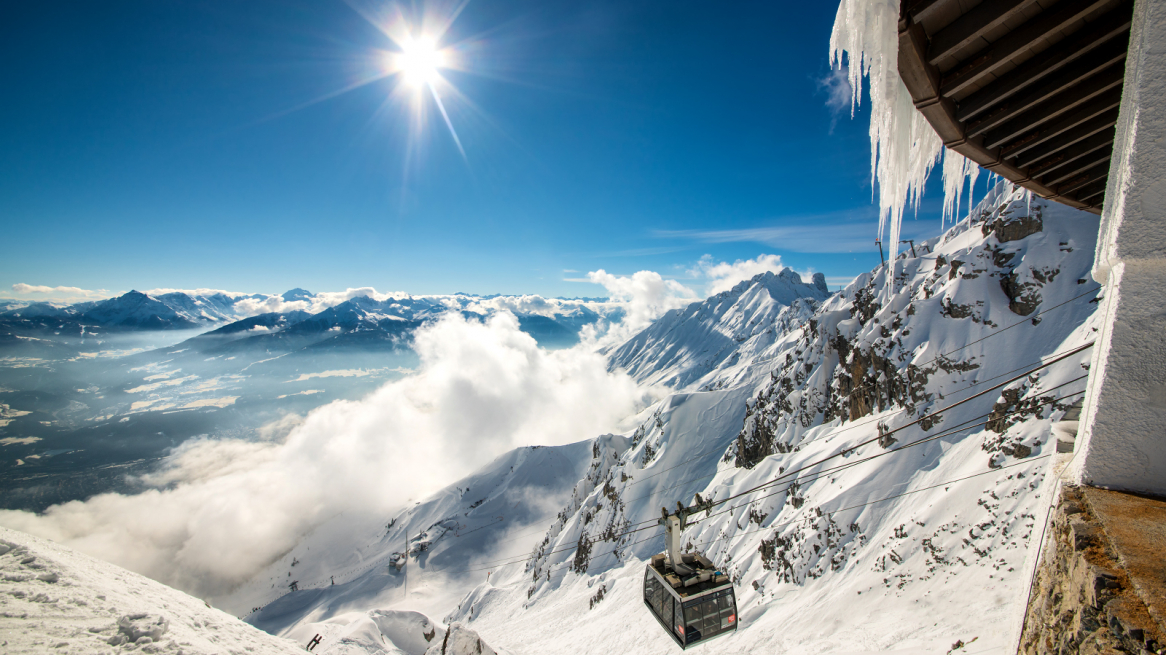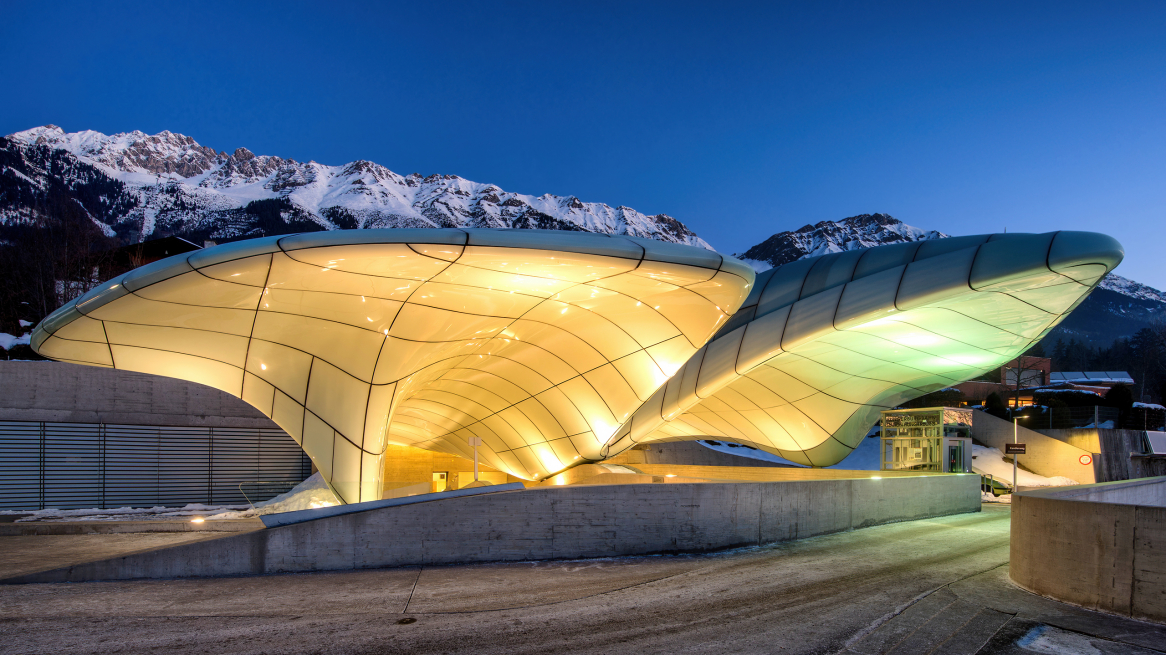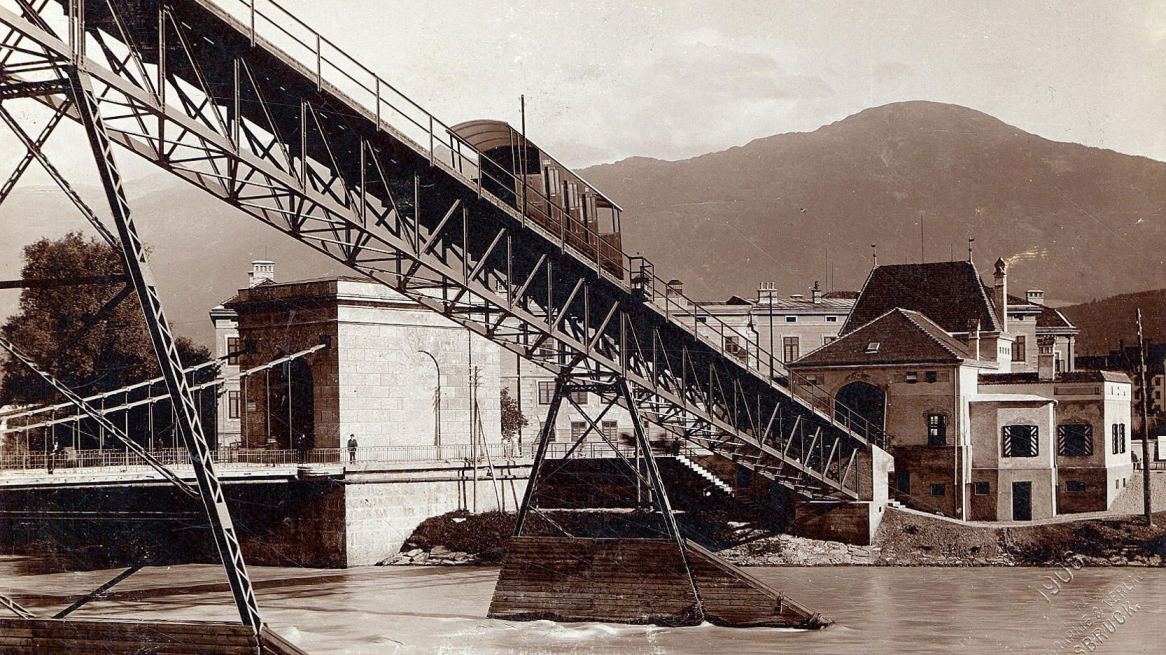
From Innsbruck city center up to Hafelekar at almost 2,300 meters without any effort: the Nordkettenbahnen give us access to spectacular views that are otherwise reserved for alpinists. They have been connecting the Tyrolean capital with the Nordkette, the southernmost mountain range of the Karwendels, since 1928. For almost a hundred years! A great opportunity to take a look at the history of the Nordkettenbahnen. The small cable car museum in the valley station of the Seegrubenbahn at Hungerburg provides interesting insights.
Three brand new Nordkette cable cars
Construction of the first two Nordkettenbahnen started in 1927, when two sections were planned. The first from Hungerburg to Seegrube and the second from Seegrube to Hafelekar.
The planning was carried out by the architect Karl Innerebner. The Simmeringer Maschinen- und Waggonfabrik in Vienna and the company Bleichert from Germany were responsible for construction. After a year of construction, the two sections went into operation.
They were then connected to the funicular that had been running from Mühlauer Kettenbrücke to Hungerburgsince 1906. This is why it bears the fitting name Hungerburgbahn. The track is still preserved today and is part of the cityscape for many. Today you can board the train in the city center. However, this expansion step was not to follow until many years later.
Construction of support 4 Nordkettenbahnen © Stadtarchiv/Stadtmuseum Innsbruck
The old Hungerburg Railway crosses the Inn © Stadtarchiv / Stadtmuseum Innsbruck
From the city center to the Hafelekar: new since 2004
2004 - a big year for the Hungerburgbahn and Nordkettenbahnen: the year of fundamental renovation. The elegantly curved, glacier-like stations of the Hungerburg were built. While they were initially viewed with skepticism, today they are proudly regarded as a remarkable example of modern architecture. But they were only one part of the large-scale modernization project.
The latest technology and historic buildings
The extensive renovation was divided into three sections: the re-routing and new construction of the Hungerburgbahn as well as the renewal of the lifts between Hungerburgand the station Seegrube and the station Seegrube and the mountain station Hafelekar. In addition to increasing transport capacity, the technical implementation of the Nordkettenbahn sections also had to take monument preservation aspects into account. The station buildings designed by Franz Baumann in the 1920s were largely retained, with necessary modifications carried out under the direction of the architects Schlögl and Süß.
The Hafelekar mountain station, the operations building and hotel Seegrube as well as the valley station Hungerburg are listed buildings. The renovation measures included minor alterations to the stations, the removal of facilities that had been added since their construction in 1927/28 and the complete replacement of the technical installations. Today, thanks to the new lifts, up to 800 people per hour can travel from the valley station Hungerburg to the middle station Seegrube. On the third section to the top of Kar, up to 620 people can travel per hour.
The Hungerburgbahn: a piece of the city's history
One section of the Nordkettenbahnen has a public transport character: the Hungerburgbahn is not only a means of transportation for mountain fans, but also a feeder to the city for the residents of the district Hungerburg. Its origins can be traced back to the lift built by engineer Josef Riehl in 1906. The valley station was located right next to the "Rotunda", where the famous giant circular painting of the Battle of Bergisel was exhibited. It went from 572 meters above sea level up to 858 meters, the route was 0.84 kilometers long. The painting has since been moved to the Bergisel and the Hungerburgbahn now also runs elsewhere.
The old Hungerburgbahn over the Inn - Photo: hafelekar, CC BY 3.0, Wikipedia
Diverter - Photo: hafelekar, CC BY 3.0, Wikipedia
Design jewel by Zaha Hadid
The old Hungerburgbahn was discontinued in December 2005. The reason for this was the new cable car with a different route and start directly in the city center next to the old town. Star architect and design guru Zaha Hadid created another flagship for the Tyrolean capital with the new Hungerburgbahn. She had previously given the famous Bergisel ski jump a new look.
From Congress on the edge of the old town, the new cable car runs via the stations Löwenhaus and Alpenzoo to Hungerburg. It joins the old route shortly before the finish line.
The glass stations designed by Hadid, which symbolize glacial ice, are a special feature. In addition, part of the line runs underground.
The cable car was opened on December 1, 2007 and has since become a new landmark of the city. The valley station, the bridge over the Inn and the viaduct still remain from the old Hungerburgbahn. They are listed monuments and fill many Innsbruck locals and Innsbruck connoisseurs with nostalgia.
Innsbruck Card
The ascent and descent with the Hungerburg- and Nordkettenbahn is included in the Innsbruck Card included. The leisure ticket is also valid.
Cover picture: © Stadtarchiv / Stadtmuseum Innsbruck
Photos, unless otherwise stated © Danijel Jovanovic Photography - www.djphotography.at
Instagram: @danijeljovanovicphotography
Facebook: Danijel Jovanovic Photography
Rate this article
Show me the location on the map
Professional photographer from Innsbruck, nature enthusiast and animal lover.
Similar articles
What do you do when the highest elevation near your home town is only around 150 meters?…
"If the bee disappears from the earth, humans will only have four years to live. No more…
The first time I met Isobel Cope, I was halfway through presenting my radio show Sensations in…
Click. A privacy policy like this is accepted in no time at all. Click. And the computer…

